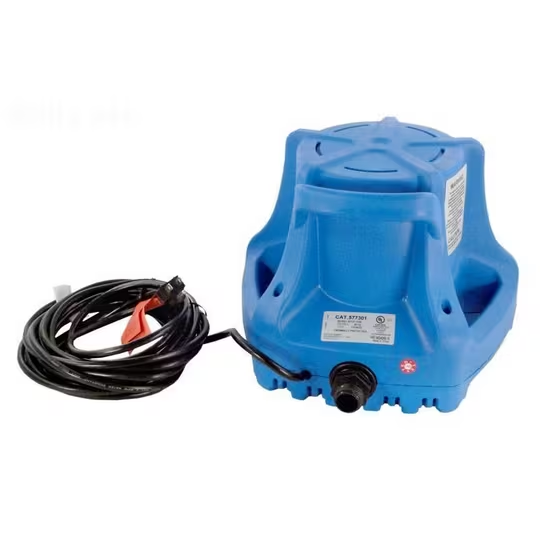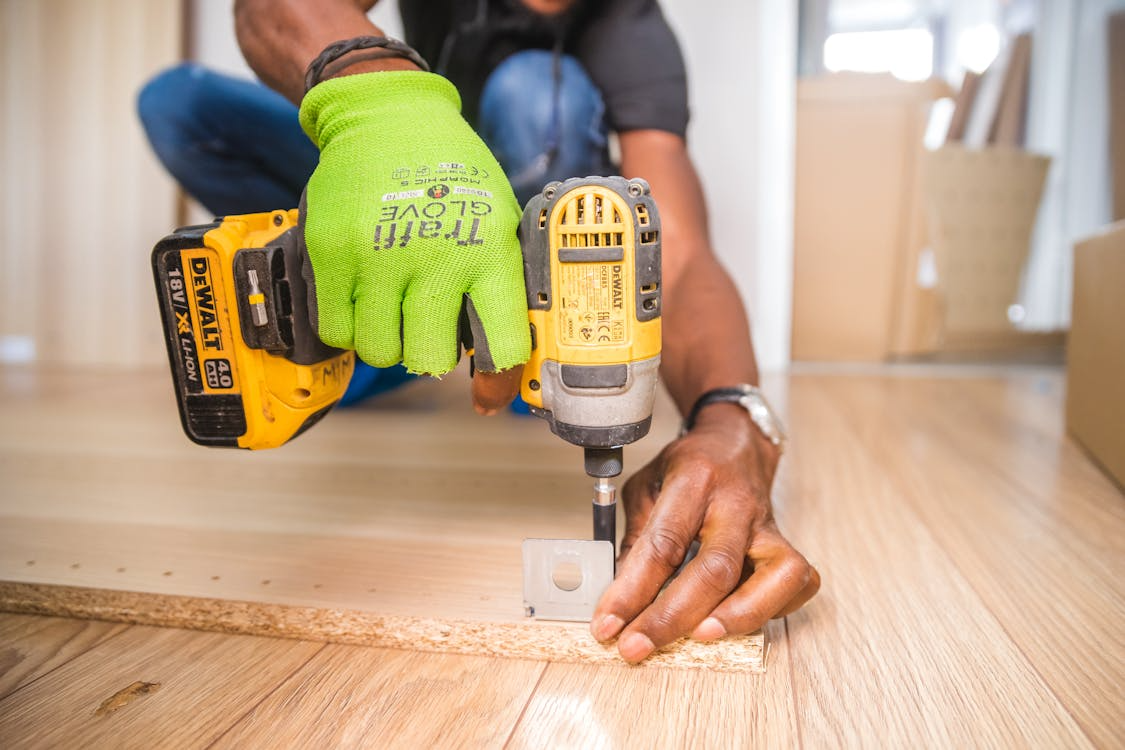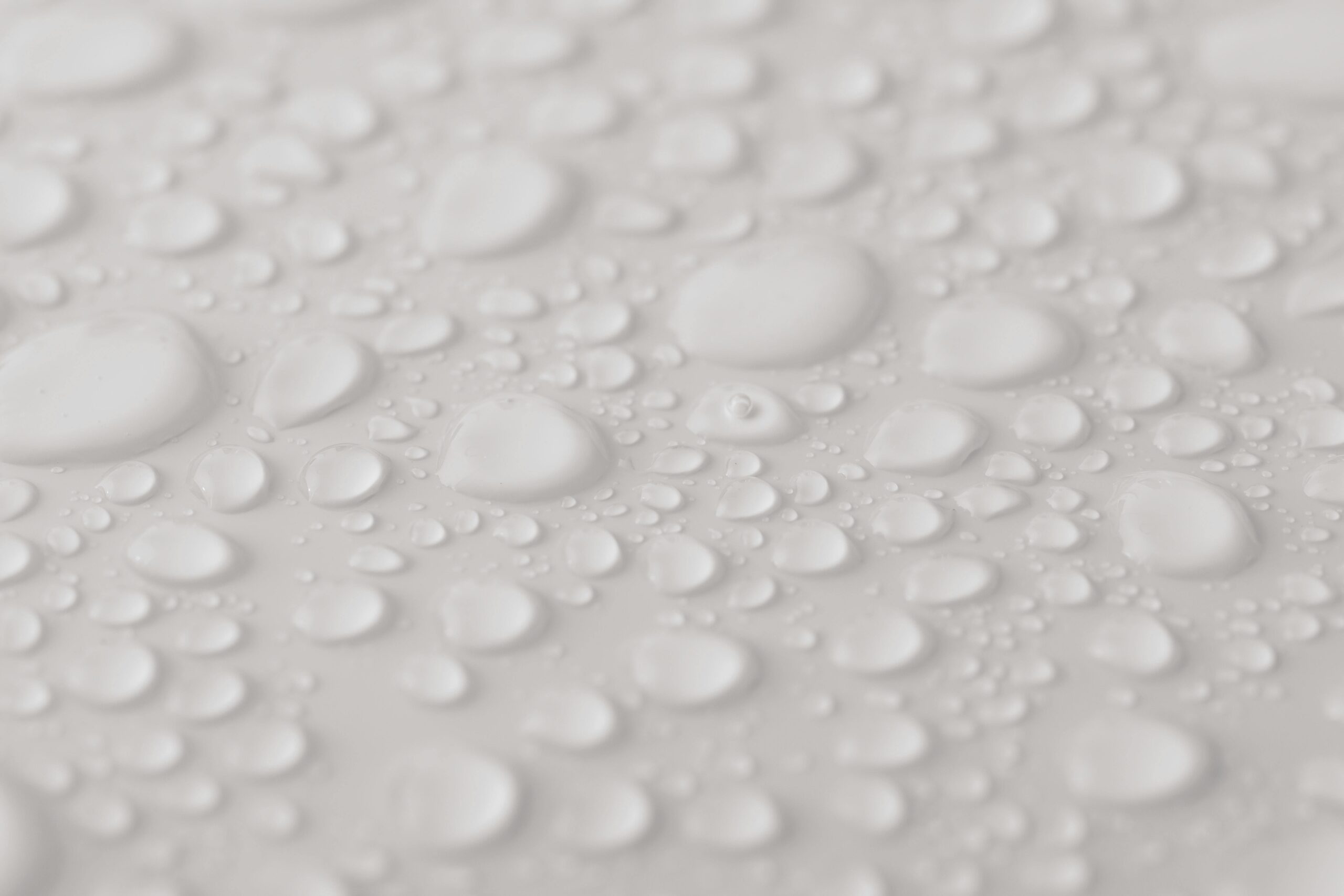Understanding Pool Cover Pumps
What is a Pool Pump Cover?
It is a specialized device designed to remove water that accumulates on top of swimming pool covers. During the off-season, especially in winter, rain, snow, and debris can collect on your pool cover, potentially causing damage or even allowing the cover to sink into the pool. A cover pump efficiently removes this excess water, protecting your pool and its cover from potential harm.
Contents
ToggleAutomatic vs. Manual Cover Pumps
Pool cover pumps come in two main varieties: automatic and manual.
- Automatic Pool Cover Pumps: These pumps are the set-it-and-forget-it option. They feature built-in float switches that detect rising water levels and automatically turn on when needed. Once the water level drops below a certain point, they shut off automatically. This hands-off approach is ideal for those who want peace of mind during the winter season or for pools in areas with frequent rainfall.
- Manual Cover Pumps: These pumps require human intervention to operate. You’ll need to plug them in and unplug them as needed. While they require more attention, manual pumps are often more affordable and can be a good choice for areas with less frequent rainfall or for those who don’t mind a more hands-on approach to pool maintenance.

Key Features to Consider
When selecting the best pool cover pump for your needs, consider the following factors:
- Pumping Capacity: Measured in gallons per hour (GPH), this indicates how quickly the pump can remove water. Higher GPH ratings are beneficial for larger pools or areas with heavy rainfall.
- Power Cord Length: A longer power cord (ideally 25 ft or more) provides greater flexibility in pump placement without needing an extension cord.
- Submersible vs. Non-submersible Designs: Submersible pumps can be fully immersed in water, often providing more efficient water removal.
- Horsepower (HP): Higher HP ratings generally indicate more powerful pumps, but energy efficiency is also considered.
- Check Valves: These prevent water from flowing back into the pool cover once pumped out.
- Hose Compatibility: Ensure the pump can connect to your existing garden hose or comes with a suitable discharge hose.
- Automatic Operation: For hands-off maintenance, look for pumps with built-in sensors that automatically turn on and off based on water levels.
Top Brands in the Pool Cover Pump Market
Little Giant
Little Giant has built a strong reputation in the pump industry, and their pool cover pumps are no exception. Known for durability and consistent performance, Little Giant pumps are a popular choice among pool owners.
Wayne
Wayne has made a name for itself with innovative features in their automatic pool cover pumps. Their models often include advanced sensors and energy-efficient designs.
Other Notable Contenders
Brands like Superior Pump and Fibropool also offer competitive options in the pool cover pump market, each with its own unique features and price points.
In-Depth Comparison of Best-Selling Models
Let’s take a closer look at some of the most popular pool cover pumps on the market:
1. Little Giant APCP-1700 Automatic Swimming Pool Cover Pump
Key Features:
- Pumping Capacity: 1,700 GPH
- Power: 1/3 HP
- Cord Length: 25 ft
- Automatic operation with built-in float switch
- Removable intake screen for easy cleaning
Pros:
- High pumping capacity suitable for large pools
- Long power cord for flexible placement
- Durable construction for long-term use
- Automatic operation for hands-off maintenance
Cons:
- Higher price point compared to some competitors
- May be overkill for smaller pools
2. Wayne WAPC250 Pool Cover Pump
Key Features:
- Pumping Capacity: 3,000 GPH
- Power: 1/4 HP
- Cord Length: 25 ft
- Automatic operation with iSwitch technology
- Freezeproof protection down to 20°F
Pros:
- Extremely high pumping capacity
- Energy-efficient design
- Advanced automatic operation with iSwitch
- Suitable for cold climates
Cons:
- May be more expensive than some alternatives
- Potentially more features than necessary for some users
3. Superior Pump 91250 Utility Pump
Key Features:
- Pumping Capacity: 1,800 GPH
- Power: 1/4 HP
- Cord Length: 10 ft
- Versatile use as both a cover pump and utility pump
- Thermoplastic construction for durability
Pros:
- Affordable price point
- Versatile for multiple uses beyond pool covers
- Compact design for easy storage
Cons:
- Manual operation requires more attention
- A shorter power cord may necessitate an extension cord
Performance Analysis
When evaluating pool cover pumps, consider these performance factors:
- Water Removal Efficiency: How quickly can the pump remove standing water from your pool cover? This is particularly important in areas with heavy rainfall or snowmelt.
- Flow Rate and Drainage: A pump’s ability to maintain consistent flow, even with some debris present, is crucial for effective water removal.
- Suitability for Different Pool Types: Consider whether the pump is designed for in-ground pools, above-ground pools, or both. Some pumps may be more versatile than others.
Durability and Longevity: Investing in Long-Term Performance
A quality pool cover pump should be viewed as a long-term investment in your pool’s maintenance. Consider these factors:
- Build Quality and Materials: Look for pumps with corrosion-resistant materials and robust construction to withstand the elements.
- Warranty Coverage: A longer warranty period often indicates the manufacturer’s confidence in their product’s durability.
- User Reviews on Long-Term Performance: Real-world experiences from other pool owners can provide valuable insights into a pump’s longevity and reliability.
Ease of Use and Installation: Simplifying Your Pool Maintenance
The best pool cover pump should make your life easier, not add complexity to your maintenance routine:
- Setup Process: Look for pumps with clear instructions, and minimal assembly is required.
- Convenience Features: Automatic on/off functionality, freeze protection, and easy-to-clean filters can greatly enhance user experience.
- Compatibility: Ensure the pump works well with your existing pool equipment and cover type.

Price vs. Value Analysis
When assessing the value of a pool cover pump, consider both initial costs and long-term expenses:
- Initial Cost: While it’s tempting to opt for the cheapest option, remember that quality often comes at a price.
- Long-Term Costs: Factor in energy efficiency, potential repair costs, and the pump’s expected lifespan.
- Best Value Picks: Consider pumps that offer a balance of features, performance, and affordability for your specific needs.
Additional Considerations for Pool Cover Pump Selection
- Versatility: Some pumps can double as utility pumps or sump pumps, offering more value for your investment.
- Accessories Included: Check if the pump comes with necessary accessories like hoses and adapters or if these need to be purchased separately.
- Customer Support: Reliable customer service and readily available replacement parts can be crucial for long-term satisfaction.
Conclusion: Making the Best Choice for Your Pool
Selecting the right pool cover pump is an important decision that can significantly impact your pool maintenance routine and the longevity of your pool cover. By considering factors such as pumping capacity, automatic operation, durability, and overall value, you can find a pump that meets your specific needs.
For those seeking a high-capacity, fully automatic option, the Wayne WAPC250 stands out with its impressive 3,000 GPH rating and advanced iSwitch technology. If reliability and brand reputation are top priorities, the Little Giant APCP-1700 offers solid performance and durability. Budget-conscious pool owners or those needing a versatile pump might find the Superior Pump 91250 to be an excellent value proposition.
Remember, the “best” pump for you depends on your unique circumstances, including pool size, local climate, and personal preferences. Investing in a quality pool cover pump is an essential step in safeguarding your pool and simplifying your maintenance routine. With the right pump in place, you can rest easy knowing that your pool is protected, allowing you to focus on looking forward to the next swimming season!
Frequently Asked Questions
What kind of switch should be on the pump I buy?
When choosing a pool cover pump, look for one with an automatic float switch. This type of switch detects rising water levels and turns the pump on automatically when needed. It then shuts off when the water level drops, preventing damage to the pump from running dry. For those who prefer more control, manual switches are also available, but they require you to turn the pump on and off yourself.
What size pump should I have for my pool?
The size of the pump you need depends on your pool’s size and local weather conditions. Generally, a pump with a capacity of 1500-3000 gallons per hour (GPH) is suitable for most residential pools. For larger pools or areas with heavy rainfall, consider a pump with a higher GPH rating. It’s better to choose a slightly oversized pump than one that’s too small to keep up with water accumulation.
How do I install a sump pump discharge piping for my swimming pool cover pump?
To install sump pump discharge piping for your pool cover pump, first determine the best route for the pipe away from your pool. Use PVC piping and connect it to the pump’s discharge port.
How often should I replace my pool pump cover?
Pool pump covers typically don’t need frequent replacement unless damaged. However, inspect your cover regularly for signs of wear, cracks, or damage. If you notice any issues that could compromise its ability to protect the pump, it’s time for a replacement. As a general guideline, consider replacing your pool pump cover every 3-5 years, depending on its quality and exposure to harsh weather conditions.
What are the advantages of a submersible pool cover pump?
They can be placed directly in the water on top of the pool cover, allowing for more efficient water removal. These pumps are typically quieter than non-submersible models and can handle deeper water levels. They’re also less likely to lose their prime or overheat. Many submersible pumps come with built-in float switches for automatic operation, making them a convenient choice for hands-off pool maintenance during the off-season.














